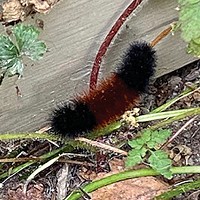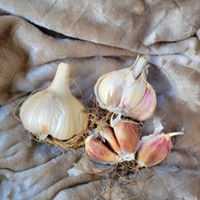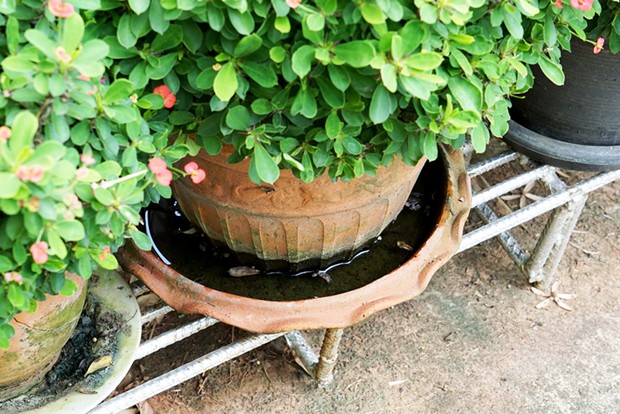[
{
"name": "Top Stories Video Pair",
"insertPoint": "7",
"component": "17087298",
"parentWrapperClass": "fdn-ads-inline-content-block",
"requiredCountToDisplay": "1"
}
]
If you're a gardener, you're probably wondering what in the ever-living gahhh is going on with the weather this year. First, we had unending rain, then the rain stopped. Sort of. Then it came back. Then it went away. But wait! The overcast skies moved in after that. Lots and lots of overcast skies or fog. Dense, thick fog. The kind of fog that makes your friends and relations never want to fly into ACV airport again, since they were flown back to SFO.
Oh, sure, we've had a few sunny days here and there. In fact, according to my 10-year garden journal, we got up to 81 degrees back on May 14 here in the Elk River area. Sure, we had a few days of sun in early June but overall, the weather has been rather dismal. Even farther inland, areas like Blue Lake and Freshwater, which are usually basking in sunshine when us coasties are whining about the fog, have been socked in. And before any old-timers tell me, "it used to always be this way," I'm here to tell you it wasn't. I've talked to plenty of old-timers who've told me this has been an unusually cool spring and start of summer. Not to mention my 23 years of garden record keeping. There's a reason it's called "Fogust" and not "Fogmay." On the coast, we get this sort of nonsense in August, generally speaking.
So. What to do with all of this cool weather? You can still garden, just not the usual gardening on the coast. Tomatoes? I cannot use laughing emojis here, according to the editor, but if I could, I would use about 20. OK, if you have a greenhouse, you might get away with some tomatoes or peppers.
But crops like lettuces and brassicas thrive in cooler climates. You can continue to direct sow these crops through much of the summer and even a few in the fall. Radishes, arugula, lettuce, broccoli, cabbage, spinach and beets can all be sown now through the next two months or so.
What else can you do in the garden? Water. Water regularly. Even though it's been cool and overcast more than it's been sunny, the garden is thirsty. Especially on those windy days, when we're blessed with some sunshine. Wind dries out plants and soil very quickly, so make sure you keep on top of watering. Direct watering at the base of the plants is preferable if you can manage it. Soaker hoses or drip lines help direct water to the roots, rather than to the leaves. All this dampness/cool means that diseases are waiting to strike your poor squash plants, roses and garlic, if you haven't harvested the garlic yet.
Have you harvested your garlic yet? I haven't but I planted mine a bit late. If you have hardneck garlic, they will likely have put out scapes by now. This is the garlic bulb trying to produce a flower. You don't want it to produce the flower. Snip off the scapes just after they start to curl around. After about another two to three weeks, it's time to harvest your garlic. Some varieties were ready for harvesting a few weeks ago but not all of them are ready. If you check at the local farmers markets, you'll see that some vendors have garlic available now, but more will be coming in the next month or so.
Another bumper crop thriving at my place right now: mosquitoes. Tons of mosquitoes. I am descended upon by clouds of mosquitoes when I go to the front yard, the garden or, well, just about anywhere on the property. It's gotten a bit better since I set out some homemade mosquito traps but those little suckers (ha!) are still doing quite well. They can reproduce in as little as a bottle cap of water, so go around your garden/yard/property and empty any standing water you find. Tarps, saucers under potted plants, water features that are still — all these are prime mosquito breeding grounds.
Set up some bat houses! Did you know a bat can eat up to 1,200 mosquito-sized insects in an hour? A single bat eats between 6,000-8,000 insects each night, so encourage them to take up residence at your place. I have three bat houses here and love watching them at dusk when they swoop down over the garden to nosh on all those pesky mosquitoes.
A good trap for mosquitoes can be made with something as simple as a 5-gallon bucket filled with a few inches of water, some straw and some mosquito bits or dunks. These bits or dunks are made up of BT (Bacillus thuringiensis serotype israelensis, which is why most people refer to it as "BT"). It's harmless to aquatic life and other critters, but not to the mosquito larvae. Sure, a bucket of gunk isn't the most attractive garden ornament but I'll take it over being eaten alive by the little blood suckers any day.
Don't forget to mulch your thirsty plants, even though it's cool and overcast. This will help retain moisture after you've watered. And stay on top of those weeds. That's my biggest challenge right now. Besides the mosquitoes.
Here's hoping the sun comes out for a more extended period of time in the near future. Given my luck, by the time this column is published, it will be very sunny and everyone will wonder what I'm talking about. One can only hope.
Julia Graham-Whitt (she/her) is owner and operator of the landscaping business Two Green Thumbs.
Speaking of...
-

Cleaning Up the Garden
Sep 29, 2022 -

Bulb Planting Time
Oct 14, 2021 - More »
more from the author
-
Working it Out in the Garden
- Jan 18, 2024
-
Winter Planting for Future Color
- Dec 21, 2023
-
Equinoctial To-Do and Native Plants
- Sep 21, 2023
- More »
































